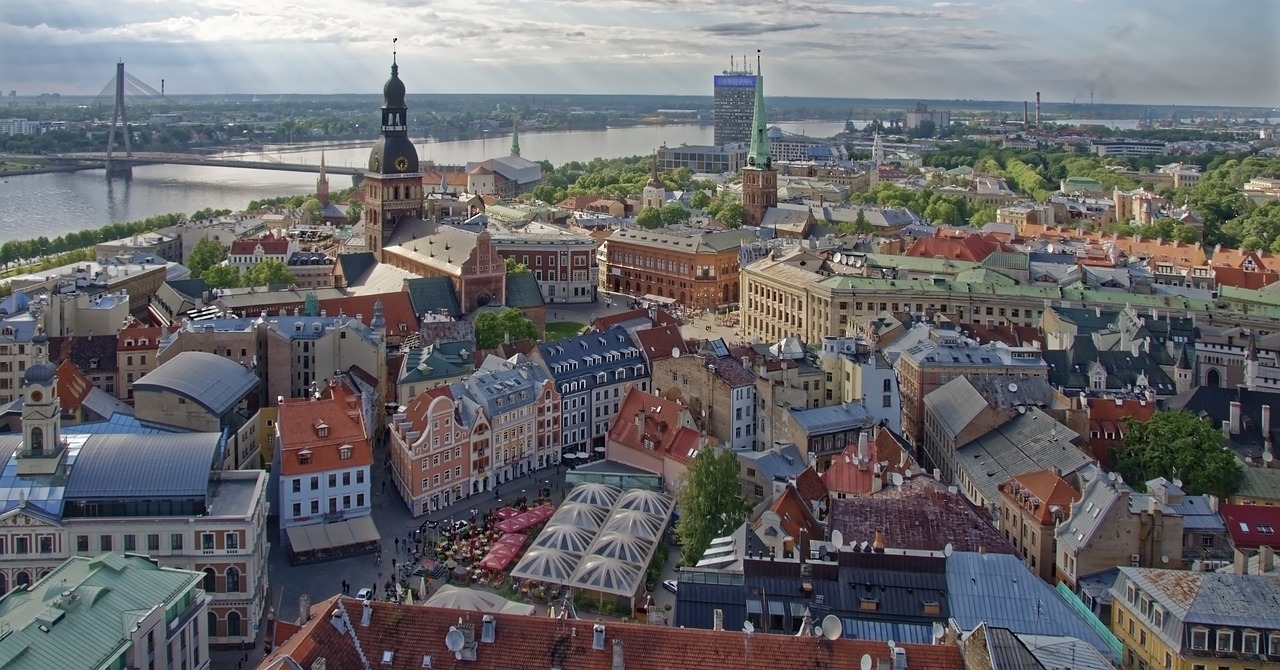If there’s one thing you need to know about the Baltics, it’s this: Estonia, Latvia, and Lithuania are three tiny republics punching way above their weight on the global stage. In their latest David vs. Goliath move, they’re cutting the cord—literally—on Russia.
For decades, these countries have been tied to Russia through an antiquated electrical system that no longer serves their needs. Now, they’re making the bold switch to European power standards. Imagine living in a house built in the 1970s, still rocking that hideous orange shag carpet, and then finally deciding, “Enough is enough.” This isn’t just about upgrading the wiring, though. This is about stepping into the future, into the light (pun intended).
But why now? Why this? Let me walk you through what’s at stake, what’s changing, and why this is a lot bigger than just flipping a switch. Why would the Baltics Shift from Russian to European Electrical Standards? This is about power—literal, political, and symbolic.
The Electrical Revolution: Baltic Style
Let’s get the obvious out of the way: Estonia, Latvia, and Lithuania are making a critical shift in their electrical grids. They're moving from the Russian standard to the European one. Now, unless you’re a tech geek, you might be wondering, “Does that even matter?” Oh, it absolutely does.
Think about it this way: you wouldn’t run your fancy new 4K TV on a generator built in the 1950s, right? The technology, the frequency, and the reliability just wouldn’t match. The Baltic countries have been stuck in the old Soviet electrical system—outdated, underpowered, and closely tied to Russian influence. But times have changed, and so have the Baltics.
This electrical shift means they’ll fully integrate into the European grid, and trust me, that’s more than just swapping plugs. It’s about breaking away from decades of dependence on Moscow, something that can’t be understated in the current geopolitical climate.
The Soviet Legacy: Breaking the Chains
To really appreciate what’s happening here, you need to understand the Soviet hangover that still lingers in the Baltics. When Estonia, Latvia, and Lithuania gained independence in the early '90s, they inherited a lot of Soviet-era infrastructure. From roads to energy grids, much of it was designed not for them, but for the benefit of Moscow.
Imagine trying to build a modern economy when your foundational systems are still designed for a world that no longer exists. It’s like trying to run a marathon while dragging an anchor. The Baltics have been trying to upgrade, but it takes time and, more importantly, money.
And while the Baltics might be small (we’re talking a combined population of just 8 million people across all three countries), they’re scrappy. These are nations that know what it’s like to fight for survival. Being tied to Russia wasn’t just inconvenient—it was a threat to their sovereignty.
Kaliningrad: Russia’s Thorn in the Baltic Side
Ah, Kaliningrad. If you’re not familiar with this tiny Russian enclave, picture a mini Moscow squeezed between Poland and Lithuania. It’s like the world’s most awkward third wheel. Not only does it complicate trade routes and infrastructure projects, but it also serves as a constant reminder of Russia’s lingering influence in the region.
For years, Kaliningrad has been a thorn in the side of European integration. Every time the Baltics wanted to build new infrastructure or strengthen their ties to the West, Kaliningrad was there to throw a wrench in the works. But despite these challenges, the Baltics have persisted.
The Power of Europe: What’s Really at Stake
Switching electrical grids isn’t glamorous. It’s not the stuff of Hollywood blockbusters. But make no mistake, this is a monumental step for Estonia, Latvia, and Lithuania. This is about more than just energy. It’s about solidifying their place in Europe, and more importantly, their place outside of Russia’s sphere of influence.
We’ve all seen how Russia operates—just look at the Ukraine war. Moscow uses energy as a weapon. It cuts off gas supplies to countries that don’t play nice. It uses its oil pipelines to manipulate Europe. By switching to the European grid, the Baltics are cutting off one of Russia’s main leverage points. This is about freedom, control, and independence in the truest sense.
And let’s not forget, this isn’t happening in a vacuum. The rest of Europe is watching closely. Poland, Slovakia, Hungary—they all switched to the European grid years ago. The Baltics are just the latest dominoes to fall, and that sends a powerful message to Moscow: Europe is moving on without you.
Population Exodus: The Silent Struggle
One of the often-overlooked aspects of Baltic life is the population exodus. Ever since joining the EU, younger generations have flocked to countries like Germany, the UK, and Sweden in search of better opportunities. In fact, the total population of Estonia, Latvia, and Lithuania is less than 8 million. That’s smaller than New York City.
This brain drain poses a unique challenge. On one hand, integration into Europe has brought prosperity and opportunities. On the other hand, the Baltics are facing demographic decline, and that’s slowing down their ability to fully break free from their Soviet past. The electrical switch is part of a broader strategy to modernize their economies and make these countries more attractive to young people. If they succeed, they might just stop the outflow of talent.
The NATO Question: Defending the Baltics
Let’s address the elephant in the room: Can the Baltics defend themselves against Russia? This has been a point of debate for years. Back in the 2000s, when NATO expanded eastward, many wondered if extending a defense guarantee to the Baltics made sense. These are small, vulnerable nations sitting right on Russia’s doorstep.
But fast forward to today, and the situation looks different. The Ukraine war has shown that the Russian military isn’t as invincible as we once thought. They’re burning through men and equipment at an unsustainable rate. While defending the Baltics is still a logistical challenge, it’s no longer a laughable proposition.
The Suwalki Gap: Europe's Thin Defense Line
One of the key strategic concerns in the region is the Suwalki Gap—a narrow stretch of land that connects Poland to Lithuania. This gap is essentially the only land bridge between the Baltics and the rest of NATO, and it’s a weak point in Europe’s defense strategy.
If Russia were to invade, the Suwalki Gap would be one of the first places they’d target. This makes infrastructure development in the region even more critical. Strengthening the physical and logistical connections between the Baltics and Europe isn’t just about trade—it’s about defense.
The Future of Baltic Power: What’s Next?
So, what does the future hold for Estonia, Latvia, and Lithuania? The electrical switch is just one piece of a much larger puzzle. These countries are investing in infrastructure, building closer ties with Europe, and distancing themselves from Moscow.
In the years to come, we can expect more integration with Europe. There’s even talk of building a bridge or tunnel between Estonia and Finland, though that’s still a pipe dream for now. But what’s clear is that the Baltics are moving in the right direction. They’ve come a long way from their Soviet past, and this electrical switch is just the latest step on their journey to becoming fully integrated members of the European community.
Call to Action: Join the Discussion
So, what do you think? Will this electrical switch truly free the Baltics from Russian influence, or is it just one small step in a much larger game of geopolitical chess? Let me know in the comments below.
And hey, if you’re as passionate about these issues as I am, why not become a part of the iNthacity community? Apply to become a permanent resident, then a citizen of the "Shining City on the Web" here. Share your thoughts, engage in the debate, and let’s shape the future together!



















Post Comment
You must be logged in to post a comment.